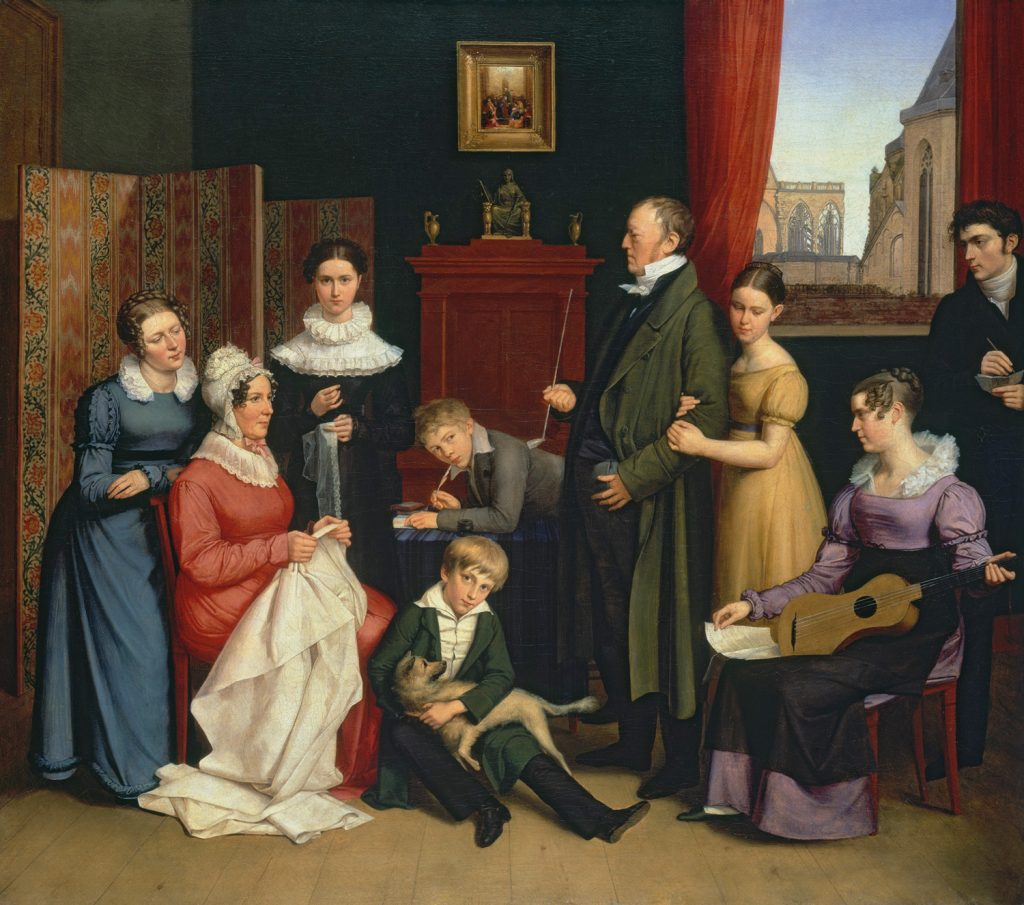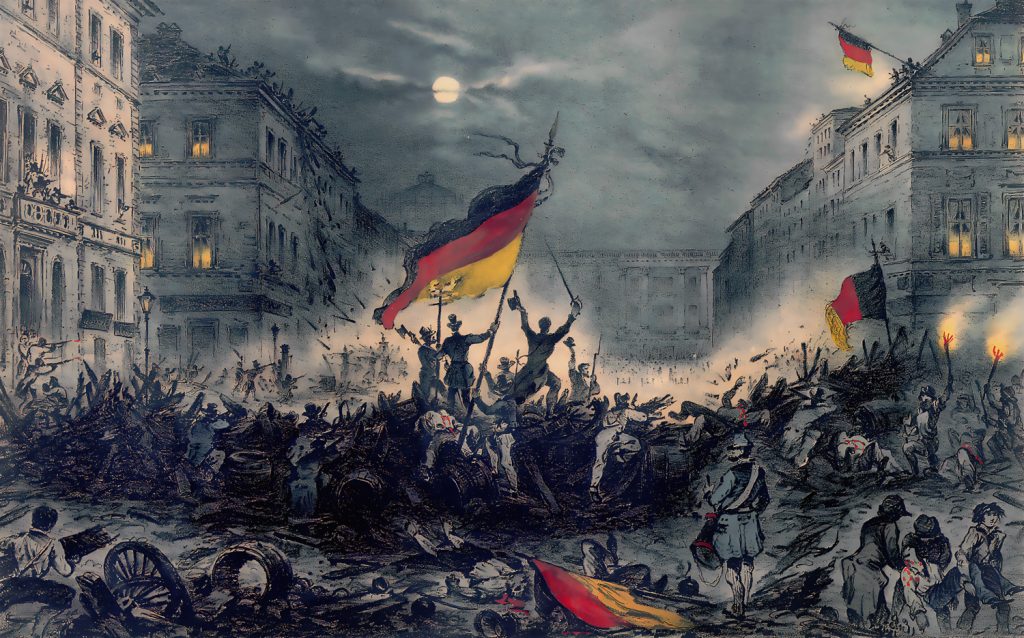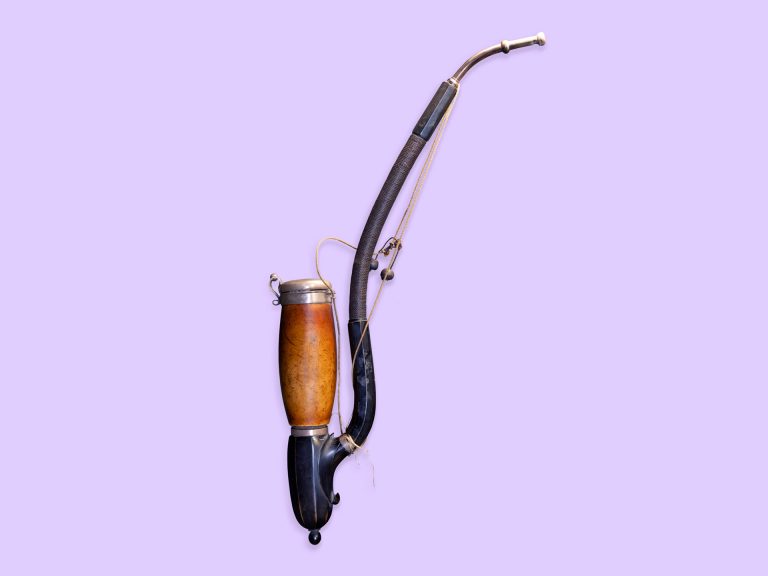
The German Confederation
1848
The German Confederation
The birth of the German nation state
The turn of the 19th century saw considerable political upheaval, not least the end of the Holy Roman Empire of the German Nation and the emergence of the German Confederation. Demands for greater political participation led to a failed revolution, and a German nation state was established in 1871.
Summary: developments from 1815 to 1848
With large areas of Germany subjugated by the French Emperor Napoleon, the last Holy Roman Emperor laid down his crown in 1806 and acceded to the dissolution of his empire. After the defeat of Napoleon, the map of Europe was redrawn at the Congress of Vienna in 1814/15; the German lands were reorganized into the German Confederation. This loose association of states undertook to provide mutual assistance in the event of revolution or foreign invasion.
The princes that ruled the various German states viewed popular political participation as undesirable and moved to suppress public criticism of their own conservative policies. Disappointed at the turn of events and fearing state repression, many citizens withdrew into private life. A literary parody from the 1840s lampooned the apolitical middle classes through the fictional character Gottlieb Biedermaier, whose name was later used to characterize this period of political and cultural stagnation: the Biedermeier period.

Hearth, home, music and pipe: many families withdrew into private life during the 1840s Oil painting by Carl Joseph Begas, 1821 (source: Wallraf-Richartz Museum via Wikimedia Commons)
The 1848 Revolutions
Dissatisfied with the oppressive political atmosphere and seeking political reform, some middle class Germans and many students attended large gatherings such as the Wartburg Festival (1817) and the Hambach Festival (1832). There, they demanded freedom of expression, popular sovereignty and national unification. It was at these gatherings, that the later German national colours of black, red and gold emerged as the symbol of the reformers. Popular disaffection grew and culminated in a series of revolutions in March 1848.
The revolutionaries introduced sweeping reforms during the course of 1848/49. The first elected German parliament, the National Assembly, convened in Frankfurt’s St. Paul’s Church and drew up an imperial constitution. In 1849 however, the Prussian king rejected the offer to become the first Emperor of a united Germany and soon ordered his army to suppress the revolution and dissolve the National Assembly. After returning to their thrones, the princes reversed many, but not all, of the reforms.
In 1866, disagreements over the future development of the confederation descended into war between rival groups under Prussian and Austro-Hungarian leadership.

On the barricades: Berlin during the 1848 revolution Partially coloured print, Druckerei Winckelmann und Söhne, undated (source: Wikimedia Commons)
A rapid Prussian victory under the leadership of Minister-President Otto von Bismarck resulted in the dissolution of the German Confederation and later in 1871, the establishment of the first German nation state under Prussian leadership.
Share article
1848
A popular revolution, fighting for national unity and political participation, was bloodily suppressed by the princes.
Epochen im Museum

About the Deutschlandmuseum
An immersive and innovative experience museum about 2000 years of German history
The forest of the Varus Battle
Knowledge is just one click away
Embark on a journey through 2,000 years of German history. One country, 12 epochs. You’re invited to experience the Epoch Weeks at the Deutschlandmuseum. Every week we showcase an epoch that is also on display in the Deutschlandmuseum.
FAQ
The German Confederation was founded in 1815 with the aim of guaranteeing the stability of princely rule in its constituent states. Each state undertook to provide mutual assistance in the event of revolution or foreign attack.
Disagreements between the states of the German Confederation descended into war in 1866. Prussia’s rapid victory over her rival Austria-Hungary enabled Otto von Bismarck to dissolve the German Confederation in the same year.
The German Confederation was made up of Austria and parts of her empire, the kingdoms of Prussia, Bavaria, Saxony, Hanover and Württemberg as well as a number of German duchies and principalities and the free cities of Bremen, Frankfurt, Hamburg and Lübeck.
Formed in 1815 at the Congress of Vienna, the German Confederation was a loose association of states lacking the state structures of contemporary Germany. The members of the confederation retained their sovereign rights; they undertook merely to provide mutual assistance in the event of revolution or foreign invasion.


